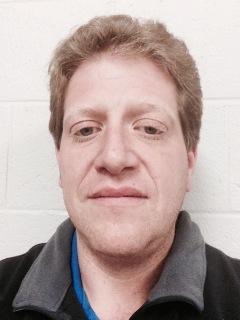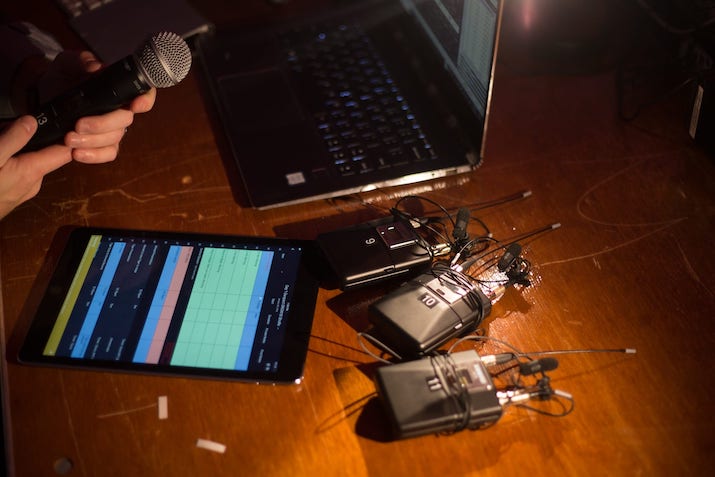Broadcast Audio’s A2s Are Key in Sports Production
‘Second-tier’ workers perform a wide range of rapidly changing functions
Story Highlights
The core purpose of the broadcast-sports A1 is to mix the game’s audio. The mission of the broadcast-sports A2 is, well, almost everything else. Compared with the A1’s highly focused primary task, the A2 is the production’s sonic polymath, sometimes specializing in one or more of the category’s subspecialties — field A2, RF A2, booth A2, truck A2, comms A2 — smaller cogs in a massive machine that cannot run smoothly without any one of them.
“A2 is a broad term that covers more jobs than just putting out mics,” says ESPN Remote Operations Specialist Kevin Cleary, succinctly summing up a deceptively compact job title. It’s also one that’s changing.
New Emphasis on Close-Up Sound
“If you had asked even a year ago how the requirements for A2s are changing, I would’ve given you a completely different answer than now,” says Jason Knapp, who has plied that trade for nearly 14 years after leaving a job at Microsoft, where he worked for a dozen years directly under Bill Gates on coding projects and consumer-product development. He began his audio career as part of a semi-regular crew led by A1 Joe Carpenter on such productions as Fox Sports’ Big Noon Kickoff college-football studio show.
What has changed, Knapp says, is the increased emphasis on personal and close-in sound.
“A year ago,” he explains, “I would never have imagined we’d be doing player walk-and-talks for CBS Golf using a Bolero system and Bluetooth, which we rolled out in January last year. I’ve learned so much about Bluetooth [technology], Bluetooth two-way microphone systems, and the 1.9 [GHz] frequency spectrum. I think we’ve gone from an A2 having to carry just one piece of equipment to [carrying] a ton of stuff these days, along with much more emphasis on IP and digital. There’s no more analog infrastructure; it’s all Dante and Hydra and fiber.”
A2s also have had to learn a lot, much of it on the fly. Much of the learning comes from the professional web that is the freelance technical community created by the system peculiar to U.S. broadcasting: front-line audio workers are largely self-employed. That has created a pragmatic camaraderie that exchanges technical tips and other information.
“It’s not ‘He’s an ESPN guy or he’s a Fox guy,’” says Knapp. “We’re part of the same freelance fraternity. We lean on each other for knowledge. A lot of it is trial and error, but it’s also sharing information.”
Their Own Knowledge Pool
That fluidity allows A2s to move fairly seamlessly among sport genres and networks as well. And that, Knapp emphasizes, benefits the entire industry, with a ready pool of knowledgeable and flexible self-starters helping keep costs down.

A2 Matt Leshner: “[Managers] take my [tech] suggestions because no one knows the gear better than the person using it.”
“Having a local [A2] is always critical to knowing the local facilities,” explains Leshner, “and having a traveling A2 is necessary to knowing the show and the productions’ wants and needs.” He oversees the audio setup for seven courts, five announce booths, and three studios for ESPN and Gravity Media at the US Open: “There’s not an effect mic or a talent mic or RF mic there that I haven’t touched on the installation, so I can sign it off.”
He notes that the corps of A2s that travel with network-level productions, which he estimates at between 20 and 25 nationally, have become more important in the wake of the pandemic and corporate budget cuts. That, in turn, has put more responsibility on the A2.
“You could make a good living back in the day just being a field A2, just putting out the effects mics just for football,” he says. “Nowadays, the networks aren’t looking for that. Now they want a person who can do the booth, who can do the field, who can do RF. The days of doing only one thing are gone. If someone calls out sick or if they want to combine two jobs, you just [offer] one skill set as an A2 anymore.”
However, the working paradigm that compels flexibility comes without standardized training to help take on multiple disciplines. A2s are on their own for most of that, and the task is getting harder every year as the shift to IP-based signal routing and processing accelerates. A2s look to manufacturers’ training to learn new products and skills, a practice that proliferated during COVID. Leshner singles out Pliant Technologies’ CrewCom brand for its weekly Zoom tutorials during the pandemic, adding that he wishes more manufacturers would continue to do that.
Specialized Skills
The A2’s responsibilities will only become larger as the industry evolves. Like Knapp, Leshner cites the demand for athlete audio as an example, such as precisely how the NBA wants its Q5X Player Mics attached to team members’ jerseys.
“That’s considered a high-skill set because the NBA expects it done a certain way to have the least impact to a player,” he explains. “Last thing you want to do is affect the game. Sometimes you have to sew them into the jersey five hours before the game starts, but the battery’s not going to support that, and you have to manage their power remotely so they don’t burn the whole time. You have to be cognizant of things like that because everyone from the NBA down to the team’s managers is counting on you. It can’t impact the game. It has to be done so the player doesn’t feel it. I’ve seen instances when the player will rip the mic off if he doesn’t like the way it feels, and I don’t blame him: he’s there to win the game, not to be on television.”
Tech Choices
Keeping up on the latest equipment isn’t simply necessary to doing the job: networks and trucks look to A2s to spot technical trends and suggest products and techniques.
“I always like to get in front of [the tech advances] ,” Leshner says, “and tell my production manager or ops manager, Hey, there’s this new gizmo out there that I think can make the setup go faster. It’s going to make the whole show go better. Can we look at it? They take my suggestions because no one knows the gear better than the person using it.”
Neither Leshner nor Knapp has any immediate ambition to go for an A1 position. Both Gen-Xers, they didn’t take the classic music-engineering routes into broadcast-sports audio. They’re comfortable with not only the technology of digital audio but the rate of change it’s precipitating.
“I think the biggest challenge right now is the rapid change of technology,” says Leshner. “Right now, with some trucks going the Dante route, some trucks going the Hydra route, you just have to stay up on what’s out there. And it’s good for A2s to be vocal to their clients about new equipment. There’s a lot of legacy gear being used because people are copying and pasting off of previous-year shows. We’re not adjusting quickly enough to [improve methods] with newer technology. And that’s something I always like to do.”
Adds Knapp, “It used to be, you just build a booth or build a tower and build a few little stand-up positions, all analog. Today, there’s fiber transport, there’s programming, there’s Dante Controller networking. And then we have to troubleshoot back from that. There’s way more involved in a show: A2 isn’t about just putting a box on the ends of a copper wire anymore. There are spectrum analyzers and fiber fault detectors, a lot more tools. Being an A2 is a lot more complex these days than it used to be.”

